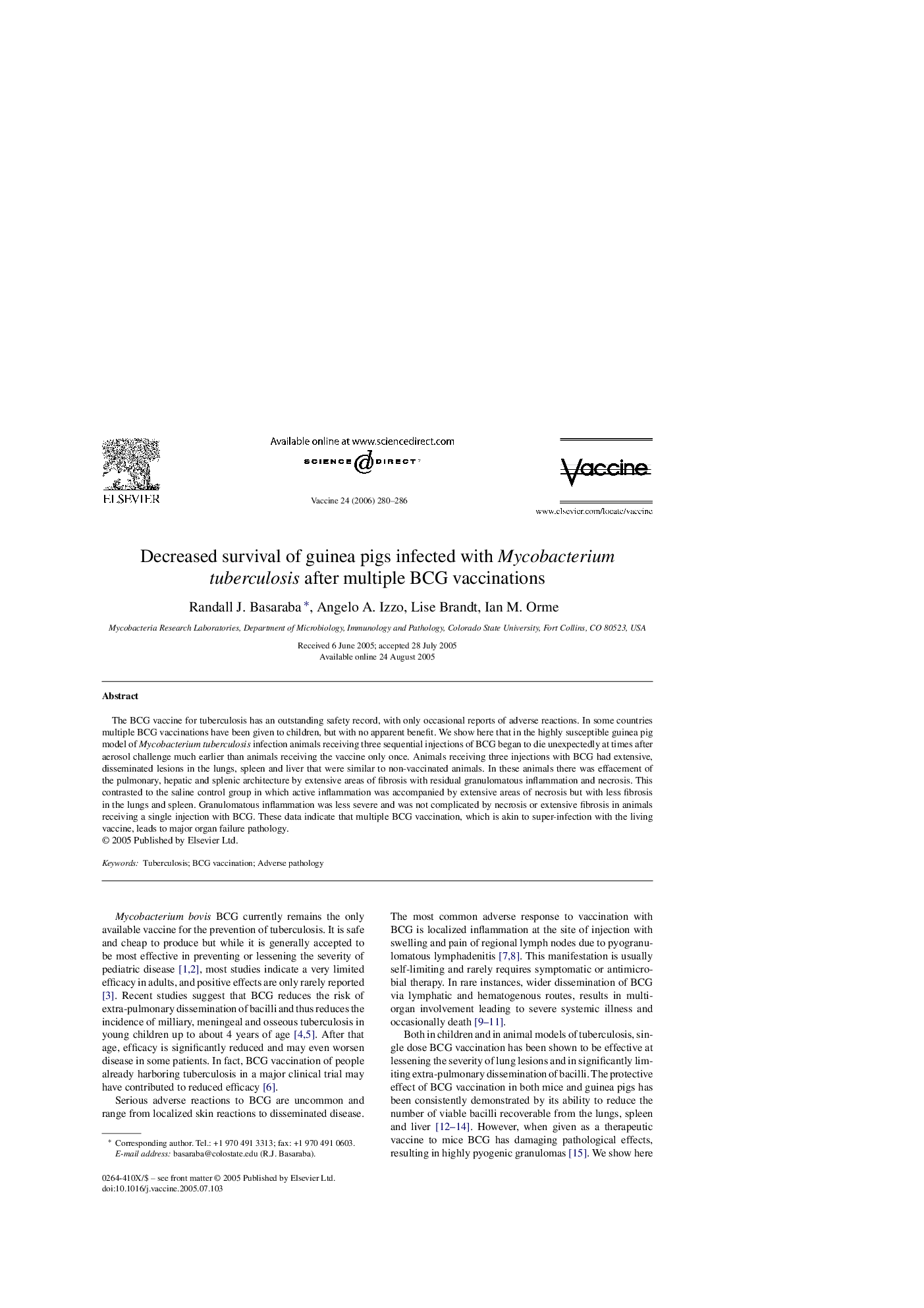| Article ID | Journal | Published Year | Pages | File Type |
|---|---|---|---|---|
| 2410058 | Vaccine | 2006 | 7 Pages |
The BCG vaccine for tuberculosis has an outstanding safety record, with only occasional reports of adverse reactions. In some countries multiple BCG vaccinations have been given to children, but with no apparent benefit. We show here that in the highly susceptible guinea pig model of Mycobacterium tuberculosis infection animals receiving three sequential injections of BCG began to die unexpectedly at times after aerosol challenge much earlier than animals receiving the vaccine only once. Animals receiving three injections with BCG had extensive, disseminated lesions in the lungs, spleen and liver that were similar to non-vaccinated animals. In these animals there was effacement of the pulmonary, hepatic and splenic architecture by extensive areas of fibrosis with residual granulomatous inflammation and necrosis. This contrasted to the saline control group in which active inflammation was accompanied by extensive areas of necrosis but with less fibrosis in the lungs and spleen. Granulomatous inflammation was less severe and was not complicated by necrosis or extensive fibrosis in animals receiving a single injection with BCG. These data indicate that multiple BCG vaccination, which is akin to super-infection with the living vaccine, leads to major organ failure pathology.
